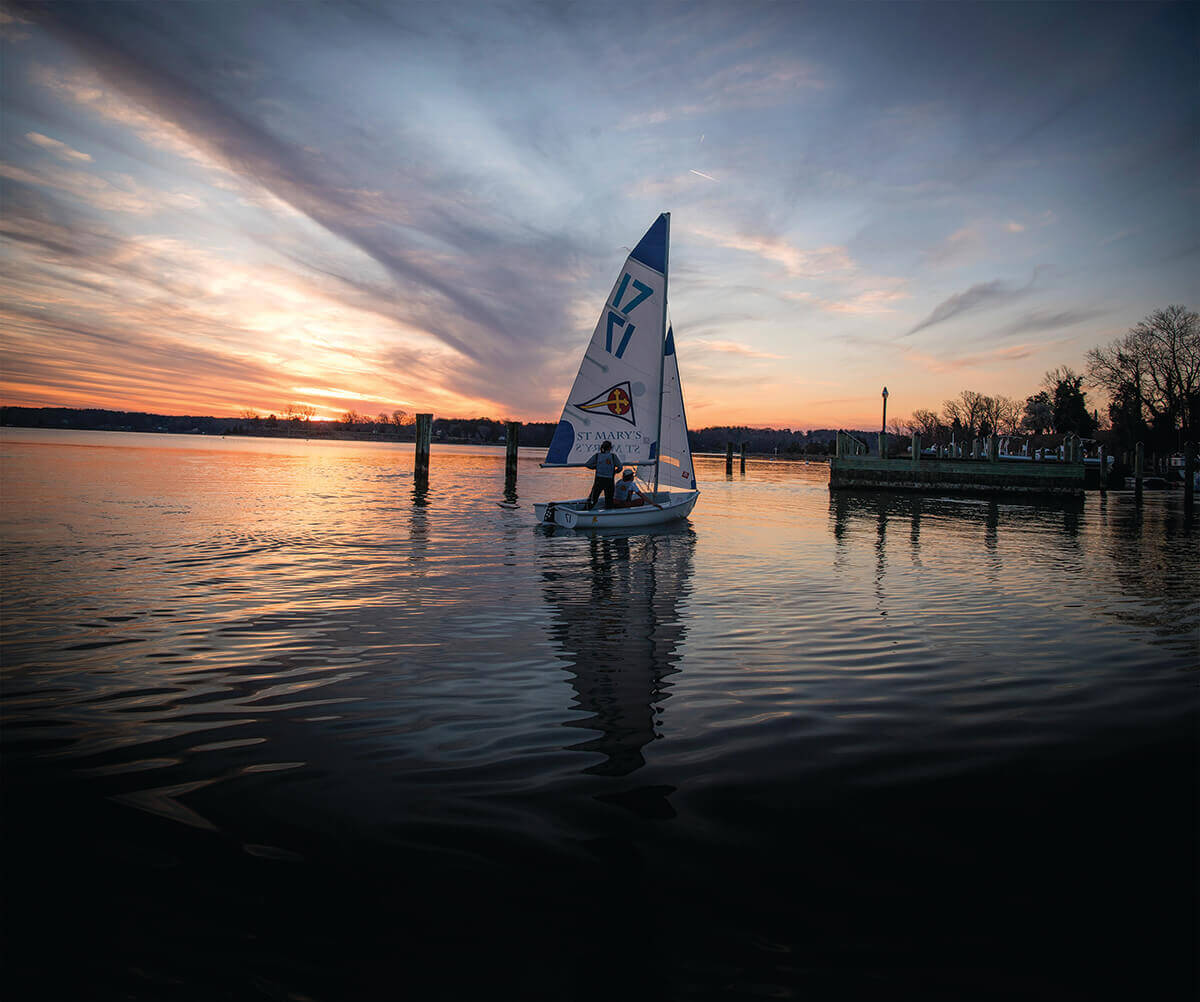Special Section
Don’t Fret Your College Major
Local universities offer programs and guidance to help students get the most out of their college years while exploring career paths.
By Emily Gaines Buchler — February 2023
It’s a conundrum: Do you go to college to study what you love or land a career?
For many students and families planning for or applying to college, this question weighs heavily—especially with the existing economic uncertainty. But administrators from colleges in the Baltimore region say it’s not a matter of one versus another, and they’re finding ways to help future and existing students carve out paths to meaningful lives and careers.
“It’s absolutely a myth that students need to know their major when they apply,” says Katherine Cole, the vice provost and dean of Undergraduate Academic Affairs at the University of Maryland, Baltimore County (UMBC). “Most majors don’t correlate directly with a career, and roughly 80 percent of undergrads nationwide end up changing their majors.”
To help students find the right fit, UMBC offers freshman seminars that integrate personality and strength tests like the Myers-Briggs Type Indicator. Seminars also teach students about the multiple avenues they can take to arrive at the same career—a concept that Cole calls “parallel pathways.” This means, for example, that students interested in law school might take the traditional route by majoring in political science. Or they might enjoy analytical thinking and major in something like sociology, or plan to pursue environmental law and study marine biology or environmental science.
Towson University (TU) offers a similar two-credit Personal Life and Career Planning course, which teaches students about existing and emerging careers, while helping them dive deep into self-exploration to determine who they are as individuals. “We want students to major in something that matters to them personally, and we tell them their major doesn’t dictate their career,” says Lorie Logan-Bennett, the assistant vice president of career services at TU.
At the same time, TU urges students to take advantage of the university’s experiential learning opportunities that let them “build skills by doing real-world work, while deciding what they like or dislike in a career,” says Logan-Bennett. Opportunities range from for-credit, in-person internships off campus to remote projects known as “micro internships,” made possible by TU’s partnership with the Chicago-based company Parker Dewey.
“Micro internships are time-delineated projects that students can take on without quitting their part-time jobs or giving up other obligations,” Logan-Bennett explains. For instance, a company in California might hire a student to compile or analyze data in a spreadsheet or synthesize research for a report. Students work on projects for a designated period and gain experience they can then use to bolster their résumés.
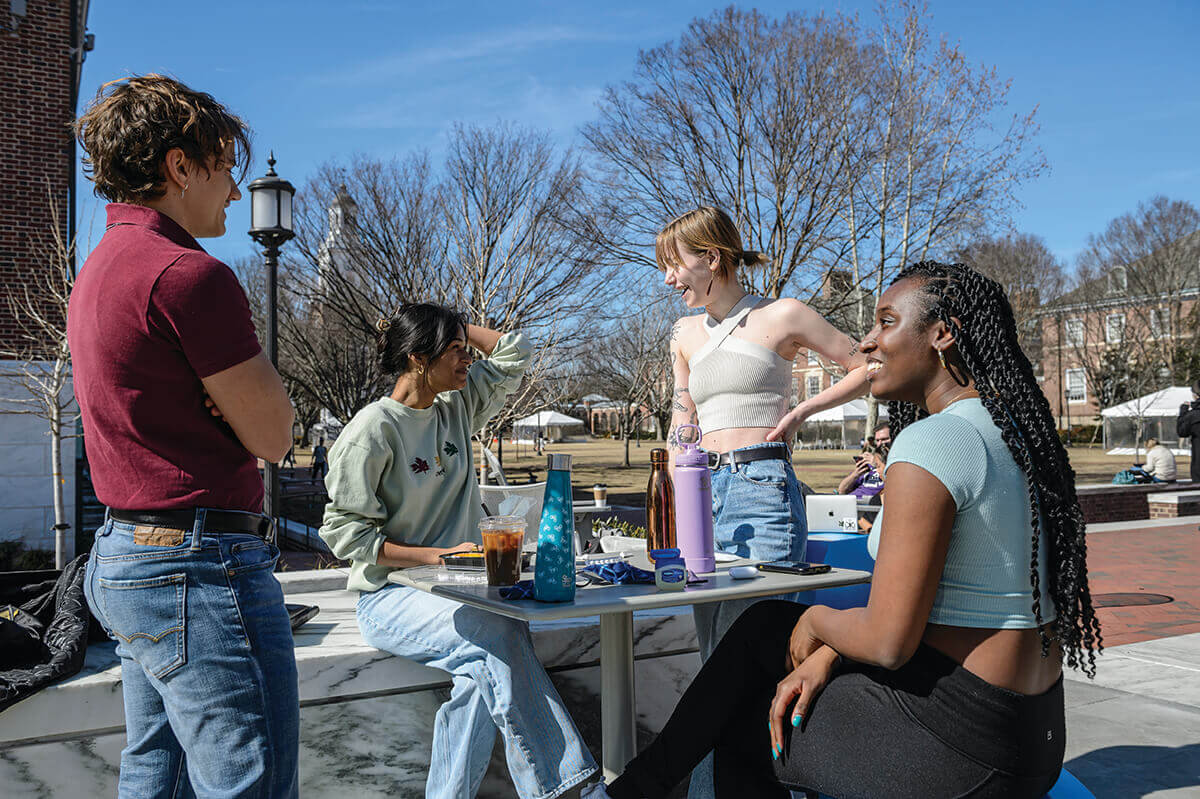
At Johns Hopkins University (JHU), too, opportunities abound in experiential learning, with programs and resources guiding students through the arduous process of identifying and honing values, interests, and goals. In addition to having access to a robust career center, Hopkins Hire, students benefit from the school’s innovative Life Design Lab (LDL), which, “takes an iterative, problem-solving approach to life- and career-planning,” explains Matthew Golden, LDL’s executive director. “The process involves doing research and coming up with a hypothesis based on your interests, talking to people, getting experience in that area, and then doing it all over again, building on what you’ve learned about yourself and that particular kind of work.”
The key, Golden says, is for students to keep an open mind as they follow their curiosity and determine or refine what they want—a process he hopes will stay with them forever.
LDL works closely with Hopkins Hire, JHU’s career center, which launched the DEI Collective to boost internship access for students from underrepresented communities. “In the past, unpaid internships were more common, and this created a disparity gap,” given that some students needed to earn money from part-time jobs and couldn’t sacrifice a paycheck to work as an intern, explains the executive director of Hopkins Hire, Alia Poonawala. “But through the DEI Collective, we require companies to pay students a minimum of $15 an hour,” eliminating the need to forego meaningful work experience.
As application deadlines near, and students and families weigh college options in the Baltimore area, remember that support exists to help you figure out and fine-tune your education, career, and life plans. “The key is to spend your time in college taking advantage of those supports and experiential learning opportunities,” even if you have a concrete path, says Logan-Bennett at TU.
Don’t worry about the lack of a clear-cut career connection to your major, advises Cole of UMBC. The liberal arts get a bad reputation, but, “we hear from employers all the time, whether it’s NASA or the NSA, that the soft skills students gain from a liberal arts degree are exactly what they look for in employees,” she says. “Academics make the individual disciplines, but the reality is that real life—and real work—are interdisciplinary.” And the college major is just one small piece of a larger puzzle.
If you are looking for the perfect fit for your college experience, look no further than Baltimore’s annual guide of regional academic institutions. Here is a roundup of what’s happening on area campuses.
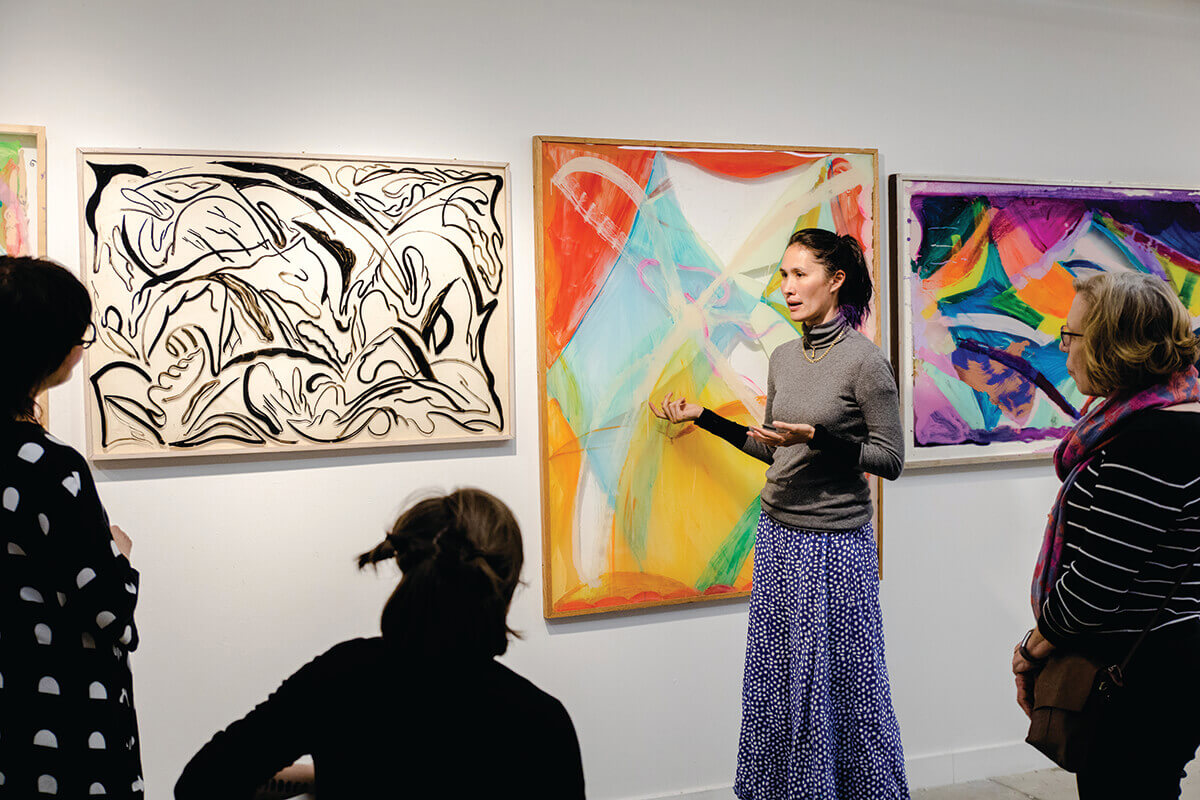
BOWIE STATE UNIVERSITY
Bowie State University in Prince George’s County began with a mission to provide educational opportunities for Black citizens and, more than a century after opening, has consistently ranked among the best HBCUs in the country, offering undergraduate and graduate degrees, as well as specialty certificates and doctoral programs. It also has a solid reputation for being one of the best values around.
SIZE OF STUDENT BODY: 5,381
STUDENT TO FACULTY RATIO: 18:1
ANNUAL TUITION: $8,753 in-state, $19,544 out-of-state
ACCEPTANCE RATE: 87 percent
POPULAR AREAS OF STUDY: Business Administration, Criminal Justice, Radio and Television Broadcasting Technology/Technician, Psychology, Biology, Computer/Information Technology, Child Development, Nursing, and Sociology
COPPIN STATE UNIVERSITY
A historically Black institution founded in 1900, Coppin State University is situated in the heart of Baltimore City in the Mondawmin neighborhood. Part of the University System of Maryland in Baltimore, the school offers 57 undergraduate, graduate, and certificate degrees. It’s been rated in the Top 50 Best HBCUs in the Nation (College Consensus), the Top 5 Best Value Online Schools in Maryland (Online School Center), and No. 7 Best Colleges in Maryland by Salary Score (GradReports).
In 2022, CSU received two large-scale federal education grants, including a $3.7-million Teacher Quality Partnership grant from the U.S. Department of Education to increase teacher diversity, while boosting student success in high-needs urban and rural schools across Maryland. CSU also recently created the Freddie Gray Student Success Scholarship, which is available to graduates of Carver Vocational-Technical High School, where Gray was a student.
Coppin takes esports (competitive video gaming) seriously. In the fall of 2021, Coppin became the first HBCU to open a building on campus exclusively devoted to esports. The Premier Esports Lab opened in September, with a guest appearance from Grammy-nominated artist Cordae.
SIZE OF STUDENT BODY: 2,108 undergraduates, 240 graduates
STUDENT TO FACULTY RATIO: 0:1
ANNUAL TUITION: $6,904 in-state, $13,560 out-of-state
ACCEPTANCE RATE: 54 percent
POPULAR AREAS OF STUDY: Nursing, Business, Biology, Education, Criminal Justice, Rehabilitation Counseling
FROSTBURG STATE UNIVERSITY
For those who want to escape to the Appalachian Mountains while still benefitting from the low cost of in-state tuition, Frostburg State University in Western Maryland offers more than 100 bachelor’s, master’s, and doctoral degree programs, as well as miles of wilderness areas nearby to explore. On that note, its online M.S. in Recreation & Parks Management is ranked the No. 2 most affordable program in the U.S. by GetEducated.com.
SIZE OF STUDENT BODY: 3,677
STUDENT TO FACULTY RATIO: 14:1
ANNUAL TUITION: $9,804 in-state, $24,684 out-of-state
ACCEPTANCE RATE: 86 percent
POPULAR AREAS OF STUDY: Economics, Nursing, Business Administration and Management
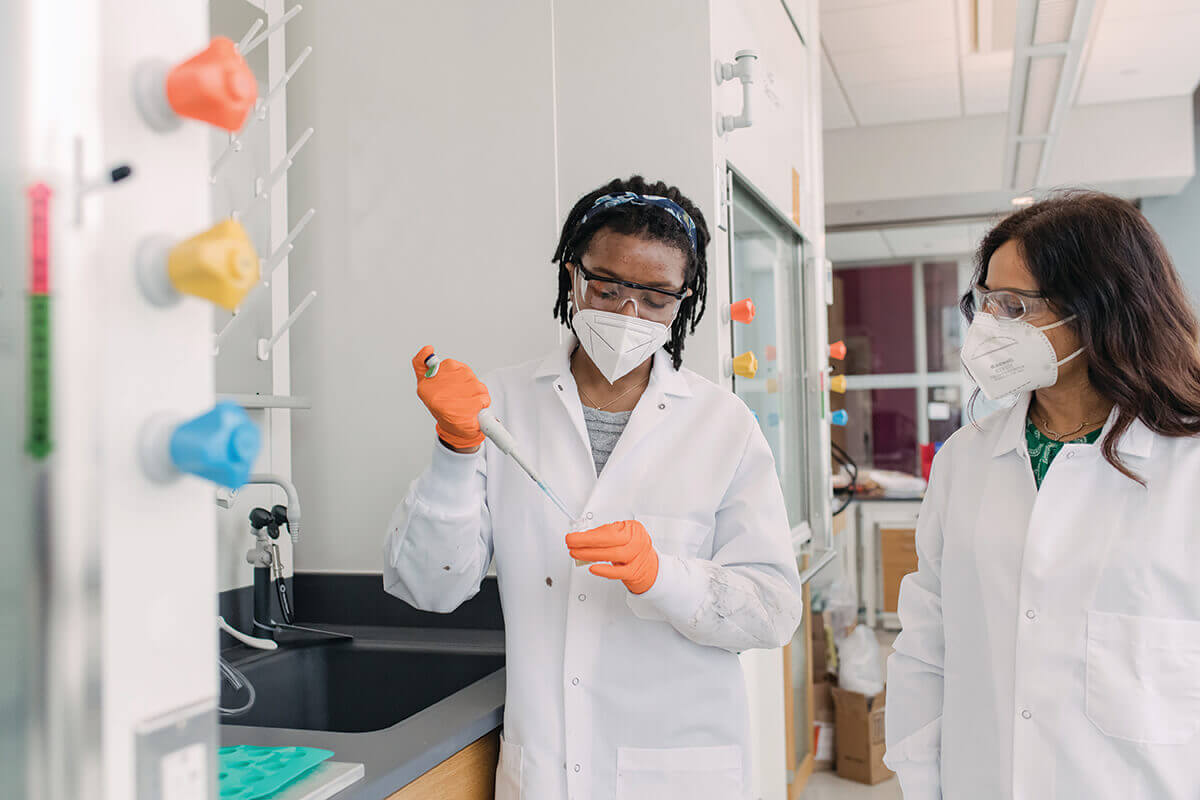
GOUCHER COLLEGE
A private, liberal arts college spanning 287 wooded acres in Towson, Goucher College takes pride in its close-knit community and leadership in global education. One hundred percent of Goucher students study abroad, and the college offers more than 60 flexible programs around the world for students to develop international experience.
Goucher has continually ranked among U.S. News & World Report’s best and most innovative national liberal arts colleges. Goucher ranked in the top four percent of all public and private colleges nationwide for its impact on social mobility, according to Georgetown University’s Center on Education and the Workforce.
In the last few years, Goucher began exciting partnerships with other schools, such as Johns Hopkins University, Loyola University, Middlebury College, and more to come, to provide a pathway for students to continue their education beyond Goucher. For instance, their 4+1 MBA Program allows students to earn an advanced business degree through Loyola via a “Fast Track” admission process, and at a 15-percent discount on tuition.
Also of note: Goucher’s unique First-Year Village, which opened between 2016 and 2018, offers a unique space for 450 first-year students to live, work, and socialize. It features a sound-proof study room and communal spaces for students to cook, learn, and interact on each floor.
SIZE OF STUDENT BODY: 1,100 undergraduate students, 900 graduate students
STUDENT TO FACULTY RATIO: 10:1
ANNUAL TUITION: $48,200
ACCEPTANCE RATE: 82 percent
POPULAR AREAS OF STUDY: Psychology, International Relations, Economics, Political Science, Business Administration
JOHNS HOPKINS UNIVERSITY
Johns Hopkins University (JHU) offers nine academic divisions and hundreds of courses of study, with campuses spread throughout Baltimore, including the Peabody Institute, a music and dance conservatory in Mount Vernon. Its main Homewood campus is located on North Charles Street.
The prestigious, world-renowned university has a strong reputation for its public health and medical studies and has been compared to Ivy League schools.
One point of pride is its financial aid program, which covers 100 percent of calculated need for every admitted student, without loans. This means JHU works with families to calculate what they can afford to contribute toward the total cost of attendance—including meals, books, travel, and other expenses—and JHU covers the rest with grants that don’t need to be repaid.
Last year, JHU added two new minors: Latin American Studies and Writing Seminars.
It also announced new efforts to move toward a broader, more flexible undergraduate educational experience that will include a required first-year seminar and the streamlining of major requirements to allow for greater intellectual exploration.
SIZE OF STUDENT BODY: 6,331 undergraduates, 22,559 graduates
STUDENT TO FACULTY RATIO: 7:1
ANNUAL TUITION: $59,128 for Peabody Institute, $60,480 for the School of Engineering and the School of Arts and Sciences
ACCEPTANCE RATE: 10.9 percent
POPULAR AREAS OF STUDY: Computer Science, Molecular and Cellular Biology, Neuroscience, Economics, Public Health Studies, International Studies
LOYOLA UNIVERSITY MARYLAND
This private, Jesuit institution offers undergraduate and graduate programs on a beautiful urban campus strewn across 81 acres in northern Baltimore City. Education at Loyola is based in the Jesuit tradition of scholarship, cura personalis, or care for the whole person. Loyola is known for its academic rigor, while helping students lead purposeful lives. Seventy percent of students study abroad, and the school currently ranks fourth in “Best Regional Universities in the North,” according to U.S. News & World Report.
SIZE OF STUDENT BODY: 3,822 undergraduates, 1,460 graduates
STUDENT TO FACULTY RATIO: 12:1
ANNUAL TUITION: $53,430
ACCEPTANCE RATE: 84 percent
POPULAR AREAS OF STUDY: Business, Management, Marketing, Journalism, Social Sciences, Biological and Biomedical Sciences, Psychology, English Language and Literature, Engineering and Education
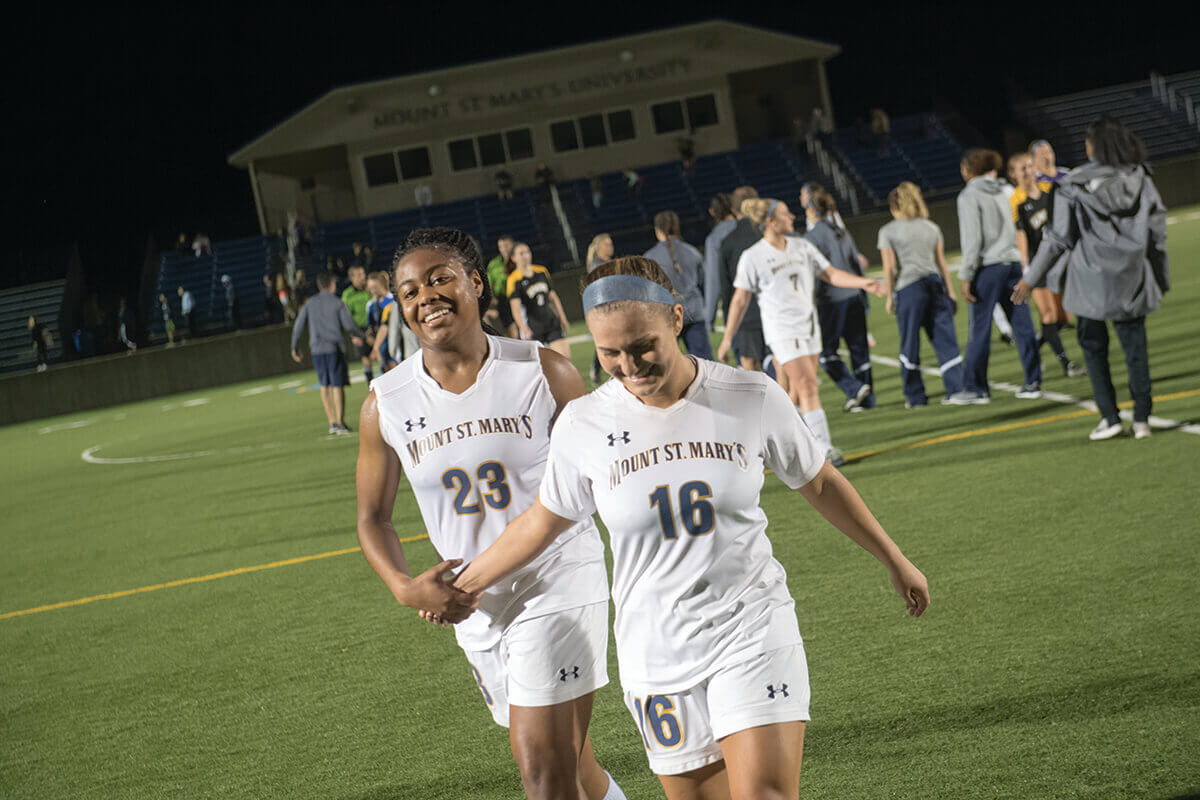
MARYLAND INSTITUTE COLLEGE OF ART (MICA)
Located in the heart of Baltimore, MICA is the oldest continuously degree-granting college of art and design in the nation. According to U.S. News & World Report, it ranks among one of the top schools for its fine arts, graphic design, painting, drawing, and sculpture programs. MICA also offers graduate-level degree programs including Master of Fine Art, Master of Business Administration Art, and Master of Professional Studies. According to its website, MICA offers, “education and experience that will prepare you to be a creative leader in the 21st century.”
SIZE OF STUDENT BODY: 3,500
STUDENT TO FACULTY RATIO: 8:1
ANNUAL TUITION: $51,870 undergraduate
ACCEPTANCE RATE: 90 percent
POPULAR AREAS OF STUDY: Graphic Design, Illustration, Multimedia, Painting, Sculpture, Fine Arts, and Photography
McDANIEL COLLEGE
Founded in 1867, McDaniel College sits in a bucolic setting near Westminster in Carroll County. The private, four-year liberal arts college offers more than 70 undergraduate programs of study and more than 20 graduate programs. A recent addition to McDaniel’s curriculum is a National Security Fellows Program that provides students with knowledge, skills, and experience in national security, along with the ability to specialize in an area of interest, such as interstate conflict, intrastate political violence, cybersecurity, ethics, and human rights.
The school also recently launched a new STEM Center to serve as a physical hub to support students studying the sciences. Equipped with adaptive workspaces and collaborative technology, the STEM Center hosts workshops focused on both the professional world and course-specific content, along with tutoring services and a study environment for students.
McDaniel earned a spot as the top-ranked Maryland institution on U.S. News & World Report’s “Best Value Schools” list among regional universities in the North for academic quality and affordability. The college also ranked as one of the “Best Regional Universities in the North” in their “Best Colleges” rankings for 2022-2023.
SIZE OF STUDENT BODY: 1,681 undergraduates, 1,208 graduates
STUDENT TO FACULTY RATIO: 13:1
ANNUAL TUITION: $46,336
ACCEPTANCE RATE: 87 percent
POPULAR AREAS OF STUDY: Kinesiology, Business Administration, Psychology, Biology, Political Science, International Studies
MORGAN STATE UNIVERSITY
The largest of Maryland’s HBCUs, Morgan is a public institution founded in 1867. It is situated in northeast Baltimore. As a Carnegie-classified high research (R2) institution, Morgan provides instruction to a multiethnic, multiracial, multinational student body and offers more than 140 academic programs at undergraduate and graduate levels. Recently, Morgan launched the state’s first bachelor of science degree in cloud computing. As Maryland’s Preeminent Public Urban Research University, Morgan fulfills its mission to address the needs and challenges of the modern urban environment through intense community level study and pioneering solutions.
SIZE OF STUDENT BODY: 7,034 undergraduates, 1,435 graduates
STUDENT TO FACULTY RATIO: 15:1
ANNUAL TUITION: $8,008 for in-state and $18,480 for out-of-state
ACCEPTANCE RATE: 87 percent
POPULAR AREAS OF STUDY: Civil Engineering, Communications Engineering, Business Administration and Management, Social Work, Biology/Biological Sciences, Architecture, Finance, Psychology, Sociology
MOUNT SAINT MARY’S UNIVERSITY
Located in rural, mountainous Emmitsburg on a massive 1,500-acre campus, “The Mount” is America’s second-oldest Catholic university. It offers more than 80 undergraduate majors, minors, concentrations, and special programs grounded in a Catholic liberal arts tradition, and several bachelor’s/master’s combinations in partnership with other universities. It’s a degree that pays: The Mount ranks in the top 10 percent of colleges and universities nationwide in terms of the long-term earnings for a four-year college degree. As an extra bonus, the school offers a rich NCAA division I athletic program.
SIZE OF STUDENT BODY: 2,570
STUDENT TO FACULTY RATIO: 12:1
ANNUAL TUITION: $44,330
ACCEPTANCE RATE: 82 percent
POPULAR AREAS OF STUDY: Business, Management, Marketing, Social Sciences, Computer and Information Sciences, Biological and Biomedical Sciences, Psychology, Communication, Journalism, Education, Family and Consumer Sciences/Human Sciences, and Health Professions
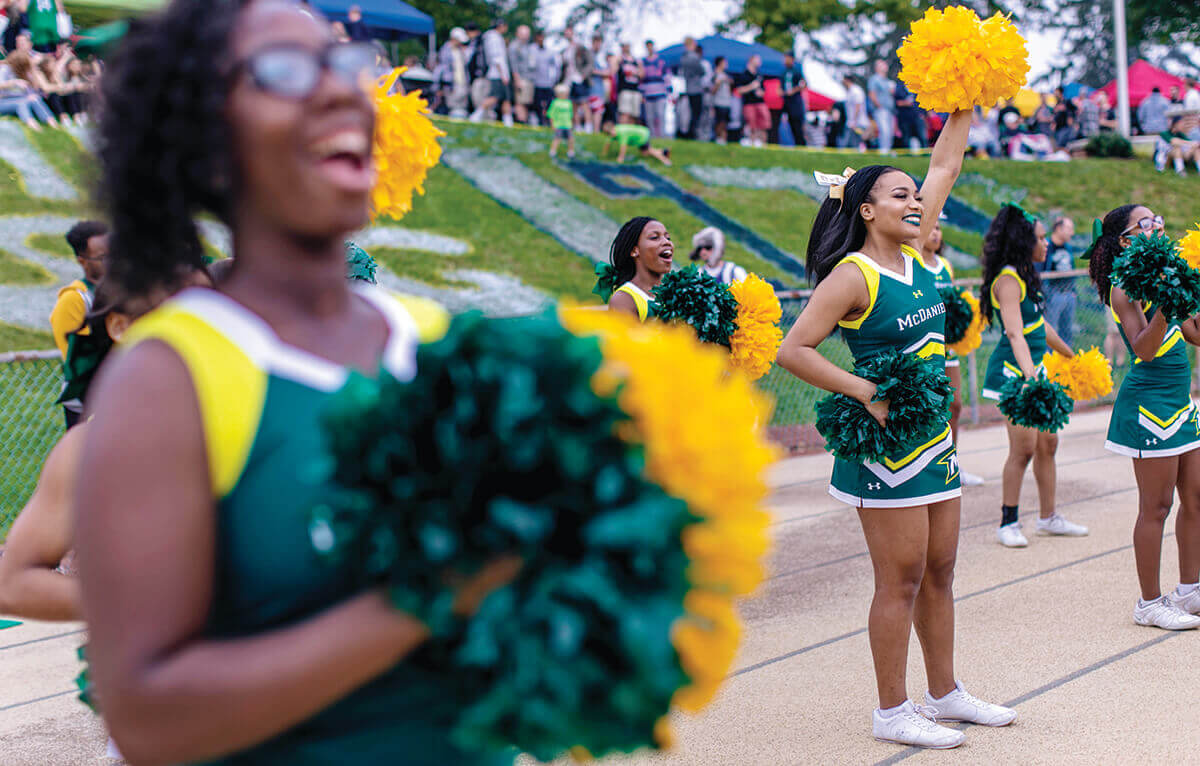
NOTRE DAME OF MARYLAND UNIVERSITY
A private, Catholic liberal arts university in northern Baltimore, Notre Dame of Maryland University offers programs ranging from undergraduate to doctoral degrees, as well as Maryland’s only women’s college. It recently launched the first master’s of art degree in art therapy program in the state.
The beautiful, wooded campus is just steps from the bustling downtown Baltimore culture. With values rooted in Catholicism, the school focuses on service to others and social responsibility.
SIZE OF STUDENT BODY: 807 undergraduate students, 1,377 graduate and professional students
STUDENT TO FACULTY RATIO: 7:1
ANNUAL TUITION: $39,250
ACCEPTANCE RATE: 86.5 percent
POPULAR AREAS OF STUDY: Nursing, Education, Biology, Art Therapy, Pharmacy
ST. MARY’S COLLEGE OF MARYLAND
A state institution founded in 1840, St. Mary’s College of Maryland was recently ranked among the best public liberal arts colleges by Money magazine. Located on 361 acres in rural Southern Maryland, it is also know for having one of the lowest student-to-faculty ratios in the U.S. While its waterfront campus in historic St. Mary’s has the feel of a private institution, it offers all the affordability, accessibility, and diversity of a public school.
SIZE OF STUDENT BODY: 1,526
STUDENT TO FACULTY RATIO: 10:1
ANNUAL TUITION: $15,184 in-state, $31,260 out-of-state
ACCEPTANCE RATE: 77 percent
POPULAR AREAS OF STUDY: Social Sciences, Psychology, Biological and Biomedical Sciences, Natural Resources and Conservation, English Language and Literature/Letters, Visual and Performing Arts, Computer and Information Sciences, History, Mathematics and Statistics, Foreign Languages, Literature, and Linguistics
SALISBURY UNIVERSITY
For those who want to be close to the ocean, Salisbury University offers undergraduate, graduate, and doctoral programs at its campus in Salisbury, about a 40-minute drive from Ocean City. In 2020, Money magazine named it one of “America’s Best Colleges.” A public institution, Salisbury is a NCAA Division III Capital Athletic Conference school.
SIZE OF STUDENT BODY: 6,695
STUDENT TO FACULTY RATIO: 14:1
ANNUAL TUITION: $10,396 in-state, $20,872 out-of-state
ACCEPTANCE RATE: 86 percent
POPULAR AREAS OF STUDY: Business, Management, Marketing, Education, Communication, Journalism, Psychology, Public Administration and Social Service Professions, Health Professions, Parks, Recreation, Leisure, Fitness, and Kinesiology, Social Sciences, Computer and Information Sciences, Biological and Biomedical Sciences
STEVENSON UNIVERSITY
Stevenson University is a liberal arts school on a suburban campus in Baltimore County. It offers bachelor’s degrees, master’s degrees, and preprofessional programs, as well as its Bachelor’s to Master’s option, which allows students to earn a bachelor’s and master’s degree in five years. The school is growing, having recently opened a 117-acre recreational and athletic hub on its Owings Mills campus.
SIZE OF STUDENT BODY: 2,979
STUDENT TO FACULTY RATIO: 15:1
ANNUAL TUITION: $38,738
ACCEPTANCE RATE: 91 percent
POPULAR AREAS OF STUDY: Health Professions, Business, Management, Marketing, and Related Support Services, Biological and Biomedical Sciences, Computer and Information Sciences, Education, Psychology, Visual and Performing Arts, Homeland Security, Law Enforcement, Firefighting and Related Protective Services, Multi/Interdisciplinary Studies, and Legal Professions and Studies
TOWSON UNIVERSITY
One of the largest public universities in the state, Towson University offers more than 110 undergraduate majors, 47 master’s degrees, six doctoral programs, and 36 graduate certificates. The university continues to draw students from other states, though it remains part of the University System of Maryland.
Its campus continues to expand, with a huge new dining hall, a 23,000-square-foot recreation and fitness facility with an indoor swimming pool, and its 5,200-seat arena for sporting events and concerts. In 2021, it opened its new Science Complex, the largest academic building on campus at 320,000 square feet. Towson also opened its StarTUp at the Armory, a space for startups and new businesses to engage with the broader community and larger businesses. It serves as a home to Towson’s entrepreneurship programs and student competitions and events.
While Towson remains the largest supplier of medical professionals and educators in the state, the university has also built a strong reputation for its College of Fine Arts and Communication, as well as its Asian Arts & Culture Center, both of which bring students and the wider community to Towson for enriching performing arts, music, and visual art programs.
SIZE OF STUDENT BODY: 18,730 undergraduates, 3,187 graduates
STUDENT TO FACULTY RATIO: 16:1
ANNUAL TUITION: $10,818 in-state, $26,820 out-of-state
ACCEPTANCE RATE: 88 percent
POPULAR AREAS OF STUDY: Business Administration, Education, Nursing, Exercise Science, Psychology, Sociology and Anthropology, Biology, Computer Science, Information Technology
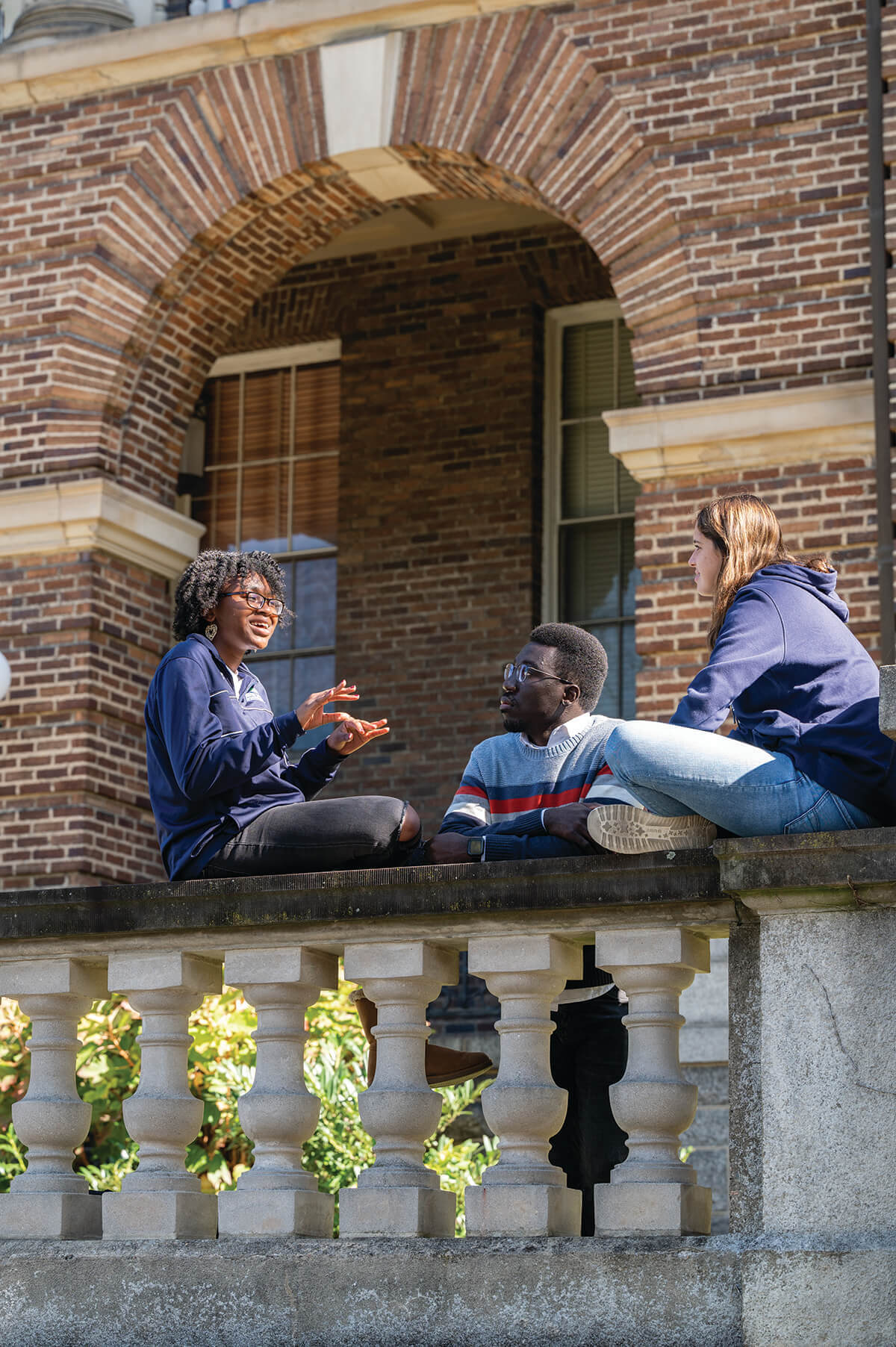
UNIVERSITY OF BALTIMORE
The University of Baltimore is situated in Mount Vernon, a Baltimore neighborhood rich in art, architecture, and history. UB has gained a solid reputation for its law and business programs, but it offers a wide spectrum of undergraduate and graduate degrees and doctoral programs, with an intense focus on connecting students to community and jobs, ensuring a sustainable career path post-graduation.
SIZE OF STUDENT BODY: 1,605 undergraduate
STUDENT TO FACULTY RATIO: 11:1
ANNUAL TUITION: $9,506 in-state, $22,956 out-of-state
ACCEPTANCE RATE: 89 percent
POPULAR AREAS OF STUDY: Business, Forensic Science and Technology, Animation/ Video Graphics/Special Effects, Healthcare Management, Criminal Science, Digital Communication and Multimedia/Media, Psychology, Political Science and Government, Human Services, Information Science
UNIVERSITY OF MARYLAND, BALTIMORE
The University of Maryland, Baltimore is the state’s only public law, health, and human services university. Located in downtown Baltimore, it offers 90 degree and certificate programs through its six nationally-ranked professional schools—dentistry, law, medicine, nursing, pharmacy, and social work—and an interdisciplinary graduate school.
The school’s 14-acre BioPark is Baltimore’s biggest biotechnology cluster, employing more than 1,000 people in nearly three dozen life science companies, university-based startups, and bioscience industry leaders like BD, Illumina, Catalent, and Pharmaron. With more than 250,000 square feet of lab and office space, the BioPark has been named an Outstanding University Research Park of the Year by the Association for University Research Parks. It’s located in the heart of the university’s medical campus.
SIZE OF STUDENT BODY: 6,931
ANNUAL TUITION: Varies by school
POPULAR AREAS OF STUDY: Medicine, Law, Dentistry, Pharmacy, Nursing, Social Work
UNIVERSITY OF MARYLAND, BALTIMORE COUNTY
University of Maryland, Baltimore County educates a student population of more than 10,000 students in programs spanning the arts, engineering, information technology, humanities, sciences, preprofessional studies, and social sciences. Located on the edge of Baltimore County, it allows easy access into the city and all the conveniences of suburban life and housing. It also offers plenty of opportunities for study abroad.
In the fall of 2021, UMBC opened the Center for Well-Being, a new two-story complex that houses Retriever Integrated Health, Student Conduct and Community Standards, and i3b’s Gathering Space for Spiritual Well-Being. UMBC’s already significant NASA partnerships have continued to grow, with NASA announcing a major award of $72 million over three years, from 2021 to 2024, for the new Goddard Earth Sciences Technology and Research II center. UMBC is leading the national consortium and will receive over $38 million. The GESTAR II consortium will support more than 120 researchers, creating extensive opportunities for breakthroughs in Earth and atmospheric science research, and providing major opportunities for students to conduct research and be mentored by NASA scientists and engineers.
SIZE OF STUDENT BODY: 10,625 undergraduate students, 3,366 graduate students
STUDENT TO FACULTY RATIO: 17:1
ANNUAL TUITION: $12,606 in-state, $28,370 out-of-state
ACCEPTANCE RATE: 69 percent POPULAR
AREAS OF STUDY: Computer and Information Sciences and Support Services, Biological and Biomedical Sciences, Social Sciences, Psychology, Visual and Performing Arts
UNIVERSITY OF MARYLAND, EASTERN SHORE
The University of Maryland Eastern Shore (UMES), the State’s Historically Black 1890 Land Grant Institution, is a teaching, research, and doctoral institution that nurtures and launches leaders in a student-centered environment. Located on over 1,000 acres in Princess Anne, UMES was ranked among one of the top HBCU’s by U.S. News & World Report in 2020. It is home to many unique programs and partnerships in health sciences, agricultural and environmental sciences, and renewable energy research and implementation, including a novel, three-year accelerated Pharmacy program and the UMES Coastal Ecology Teaching and Research Center, which plays a significant role in the diversification of the workforce of the National Oceanic and Atmospheric Administration.
SIZE OF STUDENT BODY: 1,812
STUDENT TO FACULTY RATIO: 10:1
ANNUAL TUITION: $8,724 in-state, $16,467 out-of-state
ACCEPTANCE RATE: 81 percent
POPULAR AREAS OF STUDY: Aviation Science, Agriculture, Environmental Science, Applied Design, Kinesiology, Education
WASHINGTON COLLEGE
Founded in 1782, Washington College became the first college chartered after the American Revolution. This small, liberal arts school is based on a bucolic campus in Chestertown and offers more than 50 academic programs, small class settings, and a rich study abroad program. Recent news on campus includes the receipt of a gift of over $2 million to endow merit-based scholarships.
SIZE OF STUDENT BODY: 1,026
STUDENT TO FACULTY RATIO: 9:1
ANNUAL TUITION: $50,842
ACCEPTANCE RATE: 70 percent
POPULAR AREAS OF STUDY: Social Sciences, Biological and Biomedical Sciences, Business, Management, Marketing, Psychology, Physical Sciences, English Language and Literature/Letters, Liberal Arts and Sciences, Visual and Performing Arts, Communication, Journalism, and Computer and Information Sciences
Cited tuition costs may exclude room and board, books, and other fees.
